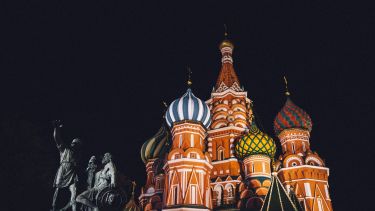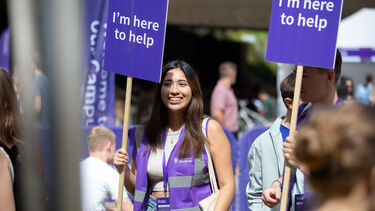Russian Translation Competition 2020
We are delighted to announce the first University of Sheffield French Translation Competition for Year 12 and Year 13 students in the UK.

The winning entries
All 21 entries were of a high standard, engaging imaginatively with the detail and broader context of the passage: everyone is to be applauded for their work. Our criteria were accuracy, reflection of the style and register of the original text and fluency as a piece of English. Warmest congratulations to the authors of the ten best translations:
- Ali Ahmed
- Peter Bellerby
- Patrick Bentley
- Arya Chanda
- Sofya Filatova
- Thomas Martin
- Aizhan Rees
- Mary Sorokina
- Polina Whiteford
- Kornelia Zygmunt
Each will receive a prize of a £25 book token and an invitation to take part in a special virtual Translation Workshop organised by the School of Languages and Cultures at the University of Sheffield, involving Russian academics, MA students in Translation Studies and alumni who work in translation-related fields. The Workshop will be held on Wednesday 9 December 2020.
We are not able to give feedback on individual entries but a fair copy of the translation, which incorporates many solutions from our entrants, is available under "Text and Translation".
Сердечно благодарим всех участников и поздравляем наших победителей!
Dr Adam Fergus
- Text and Translation
-
Kseniya Buksha, Churov i Churbanov (Moscow: AST, 2020)
Buksha’s short novel Churov i Churbanov, which centres on the appearance of a doppelganger with an identical heartbeat, has been shortlisted for the Yasnaya Polyana literary prize. A presentation of the novel by the author can be found here.Народ набрался, а Ендрикова всё не было. Он частенько опаздывал. В Гербариуме стоял ровный сонный гул. Чуров всё пытался растереть шариковый стержень, катая его между ладонями, дышал на него, готовясь записывать. Вдруг гул резко умолк. Беглый взгляд на доску, висящую в торце, среди трещин краски, густо смазанной побелкой и снова полуосыпавшейся, – и Чуров понял, что у доски-то не Ендриков, а коллега Чурбанов, в свитере и пиджаке, встрёпанный, без никакой шапки. В руках у
Чурбанова был мелок, и он увлечённо изображал на доске что-то
смешное.
– Дашь конспект по патану? – спросила Аги, поправляя заиндевевшую шапку над каплями пота в бровях. Аги было жарко внутри, а снаружи она подмерзала. – Я не успеваю за ним писать. У тебя такие крутые конспекты.
– Нормальные, – нехотя ответил Чуров. Все знали, что у Чурова лучшие конспекты на потоке. Чуровским вытянутым, аккуратным, чуть закруглённым почерком без наклона.
– Кхех, кхех! – возгласил Чурбанов громко и постучал по кафедре на манер Ендрикова. – Тема нашей сегодняшней лекции… Тише, господа! – Тема на-шей се-годняшней лекции «Анатомия и физиология двуглавого орла, изображённого на гербе Российской Федерации».
По залу пронеслось лёгкое ржание, как на концертах комиков.
– Физиологическая структура тела двуглавого орла, – начал свою лекцию Чурбанов, постукивая мелом по небрежному контуру герба на доске, вроде того абриса, который делают в известных печальных случаях следователи и судмедэксперты, – полна все- воз-можных уникальных, кхех, адаптаций, которые можно назвать выражением ком-пенсаторных возможностей. Двуглавый орёл – конечно, тии… – пичнейший случай дикефализма, при котором, как вы знаете, имеется сращение в области туловища, голов же две или, в ред-чайших случаях, даже ТРИ!
(245 words)Fair copy of translation
People had gathered, but Yendrikov still wasn’t there. He was quite often late. An even, sleepy hubbub filled the Herbarium. Churov kept trying to get the cartridge of his biro to work, rolling it between the palms of his hands and breathing on it as he got ready to take notes. Suddenly the hubbub abruptly died down.
In a fleeting glance at the blackboard at the front of the room amid the cracks in the paint covered with a thick layer of whitewash, which had half peeled off, Churov realized that it was not Yendrikov at the blackboard but his colleague Churbanov, in a sweater and a jacket, dishevelled and hatless. Churbanov had a piece of chalk in his hand and was enthusiastically drawing something ridiculous on the blackboard.
‘Can I borrow your anatomical path lecture notes?’ asked Agi, straightening her frost-covered hat above the beads of sweat in her eyebrows. Agi was hot underneath, but beginning to freeze on the outside. ‘I can’t write fast enough to keep up with him. You have such cool notes.’
‘They’re alright,’ said Churov reluctantly.
Everyone knew that Churov had the best notes in the group, written in his elongated, neat, slightly rounded, unslanted handwriting.
‘Ahem, ahem!’ proclaimed Churbanov loudly and rapped on the lectern in the same way as Yendrikov. ‘The topic of our lecture today… quiet please, gentlemen! – the topic of our lecture today is “The anatomy and physiology of the double-headed eagle depicted on the coat of arms of the Russian Federation”.'
A light chuckle, as at a comedy show, spread through the hall.
‘The physiological structure of the double-headed eagle’s body’ – Churbanov began his lecture, tapping his piece of chalk around the scruffy contour of the coat of arms on the board, which was similar to the outlines detectives and forensic scientists draw in their notorious, tragic cases – ‘is full of unique, ahem, adaptations of every kind, which we can call manifestations of the ability to compensate. The double-headed eagle is, of course, a very typical instance of dicephaly, where, as you know, fusion occurs in the region of the torso, whereas there are two, or in the most exceptional cases, even three heads!’
From Churov i Churbanov by Kseniya Buksha

Visit us
Discover what sets Sheffield apart at our undergraduate open days on Saturday 21 June and Saturday 5 July 2025.
